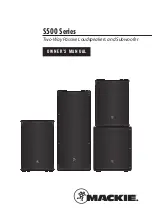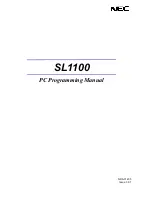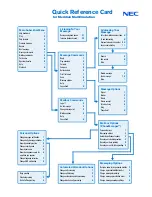
3-STAGE RO SYSTEM – MODEL AQ-RO-BASE
U.S.
Metric
Membrane Production
1
35 gpd
132 lpd
Membrane TDS Reduction
1
95% minimum
95% minimum
System Production
2
13.32 gpd
50.4 lpd
TDS Reduction
2
96.3%+ average
96.3%+ average
Maximum TDS
1000 ppm
1000 ppm
Maximum water hardness @ 6.9pH
10 gpg
2.64 gpL
Maximum Chlorine in water
3.0 ppm
3.0 ppm
Supply water pH limits
4-10
4-10
Drain (reject water) Flow
3-5 x product flow
3-5 x product flow
Empty Storage Tank Precharge
5-7 psi air
35-48 kPa air
Storage Tank Capacity
2
3.2 gallons
12.11 liters
Supply water pressure limits
40-100 psi
275-689 kPa
Supply water temperature limit
40-100⁰ F
5-37⁰ C
Efficiency
3
17.91%
17.91%
Recovery
4
29.43%
29.43%
Specifications – Qualified System Performance
Because the performance of a Reverse Osmosis Membrane is highly dependent upon pressure,
temperature and TDS, the following should be used for comparison purposes only.
1 Industry standards measure RO Membranes performance with no back pressure on the
product water, at 60 psig (414kPa) and 77°F (25°C). Further conditions on the above are 250
ppm TDS and a 30.6% recovery rate. Production rate and TDS reduction figures are for a new
Membrane that has been rinsed for 24 hours. The production rate of a new Membrane can
decrease by 10% per year or more, depending upon the scaling and fouling tendencies of the
Feed Water.
2 Measured at 50 psi, 77°±2°F, and 717 mg/l TDS per NSF/ANSI Standard 58.
3 Efficiency rating means the percentage of the influent water to the system that is available
to the user as reverse osmosis treated water. Under operating conditions that approximate
typical daily usage.
4 Recovery rating means the percentage of the influent water to the membrane portion of
the system that is available to the user as reverse osmosis treated water when the system is
operated without a storage tank or when the storage tank is bypassed.
Do not use with water that is microbiologically unsafe or of unknown water quality
without adequate disinfection before or after the system. Systems certified for cyst
reduction may be used on disinfected waters that may contain filterable cysts.
Filter is only to be used with cold water. Systems certified for cyst reduction may be
used on disinfected water that may contain filterable cysts.
Non-potable Water Sources:
Do not attempt to use this product to make safe drinking water from non-potable water
sources. Do not use the system on microbiologically unsafe water, or water of unknown quality
without adequate disinfection before or after the system. This system is certified for cyst
reduction and may be used on disinfected water that may contain filterable cysts.
Arsenic Reduction:
Arsenic (abbreviated As) is found naturally in some well water. Arsenic in water has no color,
taste, or odor. It must be measured by a laboratory test. Public water utilities must have their
water tested for arsenic. You can get the results from your water utility. If you have your own
well, you can have the water tested. The local health department or the state environmental
health agency can provide a list of certified labs. The cost is typically $15 to $30. Information
about arsenic in water can be found on the Internet at the U.S. Environmental Protection
Agency website: www.epa.gov/safewater/arsenic.html.
There are two forms of arsenic: pentavalent arsenic (also called As(V), As(+5), and arsenate)
and trivalent arsenic (also called As(III), As(+3), and arsenite). In well water, arsenic may be
pentavalent, trivalent, or a combination of both. Special sampling procedures are needed for a
lab to determine what type and how much of each type of arsenic is in the water. Check with
the labs in your area to see if they can provide this type of service.
Reverse osmosis (RO) water treatment systems do not remove trivalent arsenic from water very
well. RO systems are very effective at removing pentavalent arsenic. A free chlorine residual will
rapidly convert trivalent arsenic to pentavalent arsenic. Other water treatment chemicals such
as ozone and potassium permanganate will also change trivalent arsenic to pentavalent arsenic.
A combined chlorine residual (also called chloramine) may not convert all the trivalent arsenic.
If you get your water from a public water utility, contact the utility to find out if free chlorine or
combined chlorine is used in the water system.
The AQ-RO-BASE system is designed to remove pentavalent arsenic. It will not convert trivalent
arsenic to pentavalent arsenic. The system was tested in a lab. Under testing conditions, the
system reduced 0.3 mg/L (ppm) pentavalent arsenic to 0.010 mg/L (ppm) (the USEPA standard
for drinking water) or less. The performance of the system may be different at your installation.
Have the treated water tested for arsenic to check whether the system is working properly.
The RO component of the AQ-RO-BASE system must be replaced every 1-3 years to ensure that
the system will continue to remove pentavalent arsenic. The component identification and
locations where you can purchase the component are listed in the installation/operation manual.
Nitrate/Nitrite Test Kit:
This system is acceptable for treatment of influent concentration of no more than 27mg/L
nitrate and 3mg/L nitrite in combination measured as N. This system is supplied with a nitrate/
nitrite test kit. Product water should be monitored periodically according to the instructions
provided with the test kit.
Installations in The Commonwealth of Massachusetts:
The Commonwealth of Massachusetts requires installation be performed by a licensed plumber
and do not permit the use of saddle valves. Plumbing code 248—CMR of the Commonwealth of
Massachusetts must be followed in these cases.



























